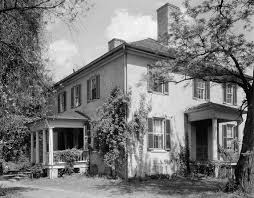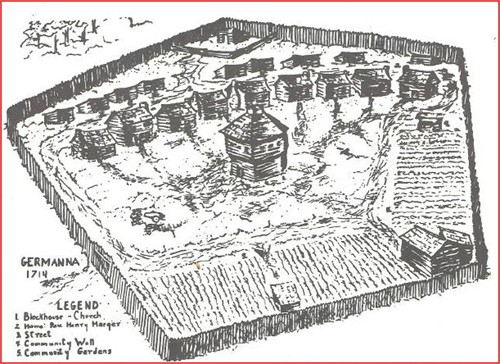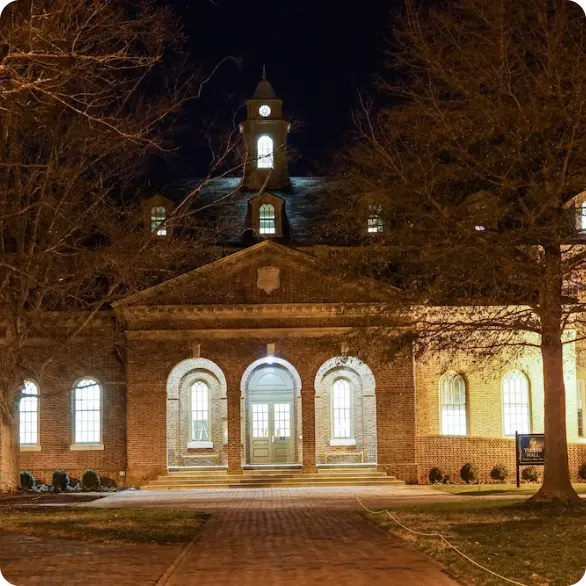The Ghost Nanny of Fall Hill
Spirit of a gentle Indian nurse still looking after Fredericksburg estate.
Fall Hill, a plantation located in Fredericksburg, Virginia, is rumored to be haunted by the benevolent ghost of a Native American woman named Katina. Katina was a Sioux Indian princess who was captured somewhere in Williamsburg in the 1700s. Her captors gifted her to Alexander Spotswood, a notable figure from Virginia’s early history.

Image Source: Fall Hill Mansion
Alexander Spotswood was born in 1676 in the English colony of Tangier, Morocco. His father, Dr. Robert Spottiswoode, was the Earl of Middleton’s surgeon. In 1684, Alexander Spotswood’s mother, Catharine Maxwell, moved the family to England. When he was around seventeen, Spotswood joined the Earl of Bath’s Regiment of Foot. He quickly rose in rank. In 1703, he became Lieutenant-Colonel and then was appointed Quartermaster-General of the Duke of Marlborough’s army. In 1704, he served with distinction during the great Battle of Blenheim, a major scrimmage fought during the War of the Spanish Succession. Spotswood sustained several serious injuries during the battle, including a broken rib, shoulder and collarbone. He took time off to recover in London, but then resumed his military duties in March 1706.

Image Source: VagenWeb.org
Having now well demonstrated his ability to lead others, Spotswood was approached by Queen Anne in February 1710 to become the Lieutenant Governor of Virginia. He sailed promptly to the colony and landed on June 20, 1710. He then traveled to Williamsburg to what would become his new home: the Governor’s Palace.
The Governor’s Palace was the official home of Virginia’s royal governors. Construction of the grand building began in the summer of 1706, after Governor Edward Nott got the General Assembly’s approval. Nott passed away before the palace was finished, so Spotswood took over and was able to convince the legislature to provide more funds. He then oversaw the palace’s completion. Many of the Governor Palace’s most remarkable attributes – including the magnificent arrangement of small arms in its entrance hall – are credited to him.
In 1720, Alexander Spotswood relocated to Germanna, a German colony in Virginia which he himself had founded. Germanna was settled in two waves. The first wave of German immigrants – some forty-two men, women and children – arrived in April 1714. They lived in a five-sided palisade, called Fort Germanna. The fort, located on the banks of the Rapidan River, also served as a buffer against Indian raids.

Image Source: Hittson.net
The second group of Germans arrived in Virginia in July 1717. Upon landing, these immigrants became indentured servants to Governor Spotswood. They were directed to settle in the Robinson River Valley and to mine for silver and iron. According to Hermann Schuricht, “[…] relations between the governor and the German colonists were of the best kind.”1
“Not long after the second colony was established, Alexander Spotswood was impeached by the House of Burgesses.”2 Hugh Drysdale, an Irishman well known for being “a just and competent leader,”3 replaced him as Lieutenant Governor. By then, though, Spotswood was already enjoying living in his new Germanna home, the “Enchanted Castle.”
Spotswood’s Germanna mansion was dubbed the “Enchanted Castle” by William Byrd II, who was a British planter, writer and statesman from Charles City. When he visited Spotswood in late September of 1732, Byrd II documented what life was like there. The “castle” – really an early Georgian-style manor – was occupied by Spotswood, his wife (Anne Butler Brayne), his four children (John, Anna Katherine, Dorothea and Robert), and his unmarried sister-in-law (Dorothea Brayne.) The family even had a pet deer. Wrote William Byrd II in his diary:
“[…] a brace of tame deer ran familiarly about the house, and one of them came to stare at me as a stranger.”4
Byrd also noted how the house was filled with tea tables, delicate china and pier glasses. To keep their home in pristine condition, the Spotswood clan had a huge team of servants at their beck and call. The young Indian maiden, Katina, was among the staff. When Spotswood had moved from Williamsburg to the castle, he had taken her with him. Katina became the nanny for his four children.
After Alexander Spotswood passed away in Annapolis, Maryland on June 7, 1740, Katina was sent to work for another distinguished colonial family, the Thorntons. The Thorntons lived on an 8,000 acre plantation in Fredericksburg. The estate, known as Fall Hill, still stands today and is listed on the U.S. National Register of Historic Places. It is located near the Rappahannock River. Its mansion, a two-story, Georgian style home featuring a hipped roof and two exterior chimneys, was remodeled several times. In 1830, its door and window frames were replaced, for instance, and Doric columns were added to its porches a few years later. According to local lore, Francis Thornton III had built the mansion in order to escape the heat produced by the family’s nearby grist mill.
At Fall Hill, young Katina “was much more than a servant […] she was the essence of dedication and devotion to the young ones she loved, and they loved her.”5 She showed the Thornton children how to respect nature and keep a close connection with the earth, for instance. Thus, when Katina passed away in 1777, she was deeply mourned. However, some believe that even in death, Katina continues to look after Fall Hill. People often see the apparition of an Indian woman with long, black braided hair roaming the estate. They believe it is the ghost of Katina.
In 1992, author L.B. Taylor visited Fall Hill to learn more about this dead Sioux princess. He interviewed Mrs. Lynn W. Franklin, who had moved into the house in 1908. According to Mrs. Franklin, Katina lay buried under an unmarked granite stone in the garden. It is usually children who come into direct contact with Katina’s spirit. One time, in the 1920s, a young boy woke up in the middle of the night to find Katina’s ghost looking over him. It then vanished through a wall.
There might be other ghosts at Fall Hill. Plenty of people have heard disembodied voices and seen doors close on their own during their visits. Electrical anomalies also frequently occur. But Katina’s benevolent spirit is more than welcome by the living. “In a way, it’s actually a comfort to have her here. This house is surrounded by a hundred acres of woods, and it’s good to have a ghost with me so no mortals bother us,”6 Mrs. Lynn W. Franklin told L.B. Taylor.
Book a Williamsburg Tour and see for yourself
Our tour will take you on a leisurely stroll along the tree-lined cobbled streets of this beautiful and historic city. In around three-quarters of a mile on our standard tour, our entertaining and knowledgeable guide will regale you with stories of characterful spots in the Historic District of Williamsburg.
For those with an appetite for the terrifying, our extended tour will take in an additional haunted locations.
Get more information and reserve a tour today!

Works Cited
1. Schuricht, Hermann. History of The German Element in Virginia, Vol. 1. Baltimore: Theo. Kroh & Sons Printers, 1898.
2. “The Second Wave.” Evolution of Germanna. University of Mary Washington, n.d. Web. 15 May 2016. Para.
3. Custis, John. The Letterbook of John Custis IV of Williamsburg, 1717-1741. Rowman & Littlefield, 2004. Page 60.
4. “Excerpts from the Diary of William Byrd II.” University of Mary Washington, n.d. Web. 15 May 2016. Para.
5. Taylor, L.B. Haunted Virginia: Ghosts and Strange Phenomena of the Old Dominion. Mechanicsburg: Stackpole Books: 2014. Page 15.
6. Taylor, L.B. Haunted Virginia: Ghosts and Strange Phenomena of the Old Dominion. Mechanicsburg: Stackpole Books: 2014. Page 15.
